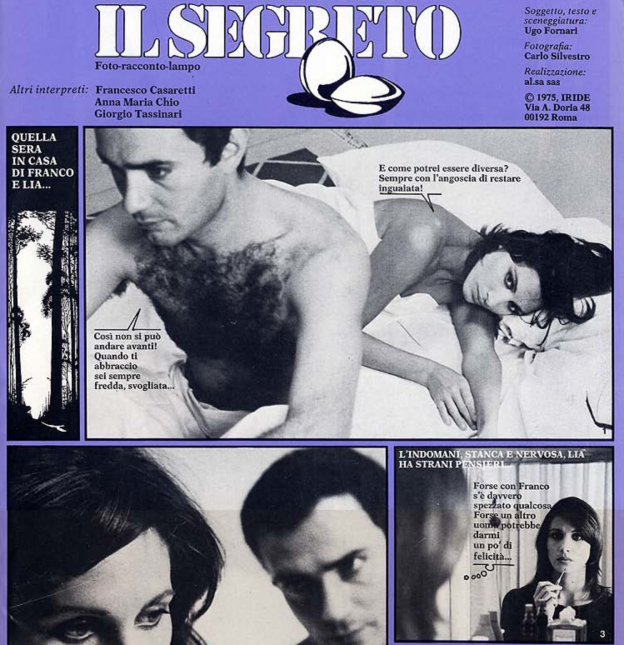In 1975, the Associazione Italiana per l’Educazione Demografica (AIED) sponsored the publication of three fotoromanzi as part of a larger campaign effort to educate Italians on the benefits of birth control and the low risks of the contraceptive pill. Against the idea that romances could only be apolitical and escapist tools, the stories of relationships narrated in the AIED fotoromanzi aimed at spreading behavioral models that were deemed appropriate by its sponsor’s policy of public health. In doing so, the fotoromanzi addressed not only the issue of unwanted pregnancies but also that of sexual rights for both men and women in a country still predominantly patriarchal, despite women’s increasing liberties in both the private as well as the public spheres. In this essay, I analyze the historical and cultural context in which the AIED fotoromanzi were conceived, advertised, and distributed. Following the tradition of American educational media, the rhetorical strategies of the AIED’s campaign were not new or original; at the same time, they departed from this tradition by uniquely engaging with Italian celebrity culture. In this way, the 1970s AIED campaign was not only innovative in Europe in the use of the fotoromanzo for propaganda purposes, but also demonstrated a deep understanding of what made the medium so successful among the masses.
3. The Secret Pill: AIED, Fotoromanzi, and Sexual Education in 1970s Italy

